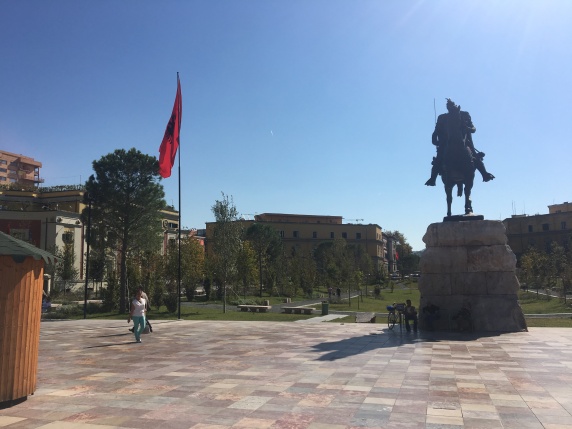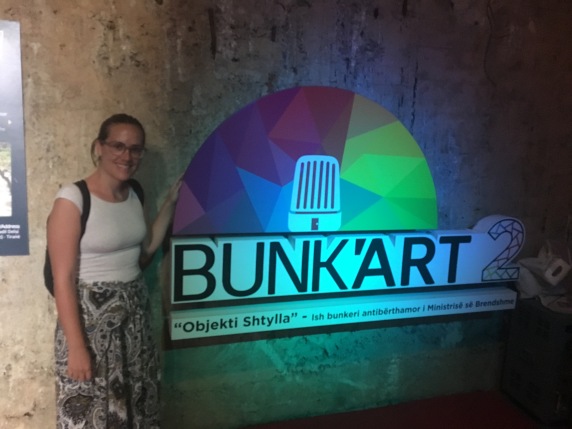Despite being surrounded by the well-trodden Balkan countries, Albania is missed off the majority of the backpacking itineraries of this region for some reason. I can only presume that this is because people have watched too many Liam Neeson films.
Whilst it is still one of the final frontiers of Europe, the landscape is beautiful, getting around is easy, and the people are friendly and welcoming. With a rapidly expanding tourism sector and a potential EU membership on the horizon, Albania is now very much open for business.
Growing up in the self-righteous West, you are often tricked into believing that the sole aim for anyone who doesn’t live there is to get in Britain as quickly as possible and spend their lifetime mooching from the state.
Despite the constant peddling of that diatribe from Daily Mail readers and Brexiteers, now I have been to 40+ countries I now know that to be an absolute load of bollocks. Albania is a great case in point for this.
Although it is close geographically to the other Balkan nations, Albania has a very different feel to the countries that we’ve just travelled down through. Whilst there is a strong Italian influence here, it generally has its own identity; the country is a bit of a veteran compared to its neighbours who have chopped and changed their names over the past fifty years and over time Albania has managed to preserve a lot of its traditional culture and customs.
Safety in Albania
Prior to visiting I did do a quick ‘Is Albania safe’ into google; simply because I’ve never met anyone who’s visited before and I wanted to be prepared.
My experience was that Albania is as perfectly safe, as safe as anywhere else in the Balkans, which in turn are considerably safer than Western Europe. I’ve always subscribed to the view that the more touristy an area is the more unsafe it is, as touristy areas tend to attract scammers, pick-pocketer’s and the like.

There is poverty in Albania of course; and on the whole, the country is poorer than Montenegro where we’d just come from, but just because someone is poor it doesn’t mean that they are going to rob you.
The Albanians we met were super friendly and helpful; as tourism isn’t yet big here they aren’t sick of foreigners at this stage. The people we met were proud people and delighted that we’d chosen to holiday in their country.
The main social issue facing Albania is in relation to the Roma population; a lot of the people from Roma backgrounds have struggled here in the post communism era; a lot of them don’t speak English well which makes it difficult for them to get through school and find good jobs. One initiative that our hostel ran is to sell bags like the one below which are made by some of the Roma women – a great way to keep their skill set up and for people to support them.

Getting In & Around
Prior to arriving in Northern Albania, we spent a couple of nights in the town of Ulcinj in Southern Montenegro. Despite being in Montenegro, there is a large Albanian population here. There wasn’t much to do in the town as it was the end of season and I’ve seen better beaches but it was a nice place to stop over for to catch our breath after a hectic couple of nights in Kotor.


From Ulcinj, we caught a bus to Shkoder in Northern Albania which was less than 10 euro each. The bus was modern, prompt and crossed the border with a minimum of hassle, dropping us into the centre of Shkoder a short walk from our hostel just ninety minutes after that.
We had a great couple of days in Shkoder; whilst it’s a good place to visit independently, it’s also a logical starting point for a wider Albanian visit as buses run from here to the capital Tirana in just two hours.
The Capital
Albania’s capital of Tirana cops a bit of stick online from travel guides and is often referred to as the ‘least popular capital in Europe’, but we really liked it. . The area previously had a lot of buildings decked out in the communist style (i.e. no style), but I get the impression that it’s picked its act up considerably over the past couple of years. Tirana was a very colourful, upbeat and friendly city. The central point of Skandaberg square was a really cool place to knock around in for a bit.


During our trip to Tirana we were also able to fit a trip into one of the two Bunk’Art museums. Bunk’Art is an old communist war bunker built by paranoid politicians and dictators many years ago. There are over 700,000 across the whole country but two of the bigger ones in Tirana have since been decked out into museums with a lot of old communism regalia and stories from that time.


Getting Out
Our original plan was to work our way from Tirana down the West Coast through a couple of the beach towns. We’d heard good things about the Albanian beaches and were looking forward to some beach time after spending so long in landlocked countries.
We’d planned to work our way to the Southern Town of Sarande; from there, regular ferries run across to Corfu, which would be our next destination. However, with accommodation booked in Corfu we sadly ran out of time and instead had to fly from Tirana into Corfu (via Athens).
It was disappointing having managed to overland all the way down from Vienna that we weren’t able to do the whole journey to Corfu overland but we still made it down to Tirana which was a pretty good effort regardless.
As we had to fly to our next destination, we were determined to at least get to the airport the way the locals do. We asked a few people in Tirana where the airport shuttle ran from and this resulted in taxi drivers noting that we were tourists and appearing from seemingly thin air to offer to take us instead.
However, we persisted and eventually found our spot, hopping onto the local bus to the airport which ran hourly and cost 250 lek (A$3).

Tirana airport was one of the nicest I’ve been to as well, so with plenty of good experiences from Albania, off we went to Corfu vowing to return when we could.
